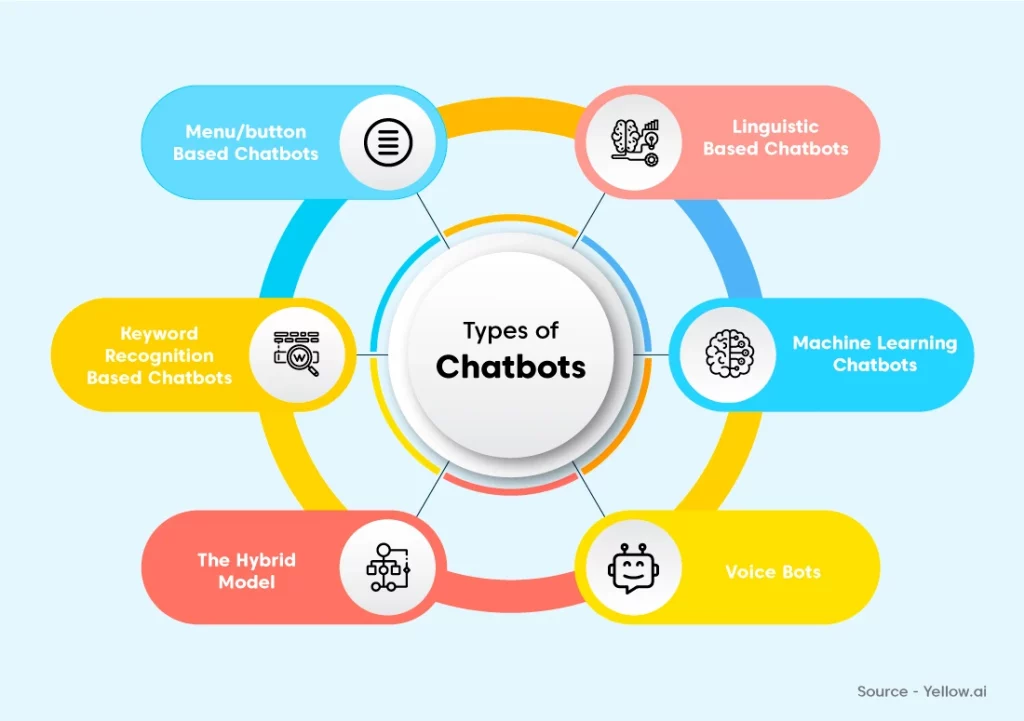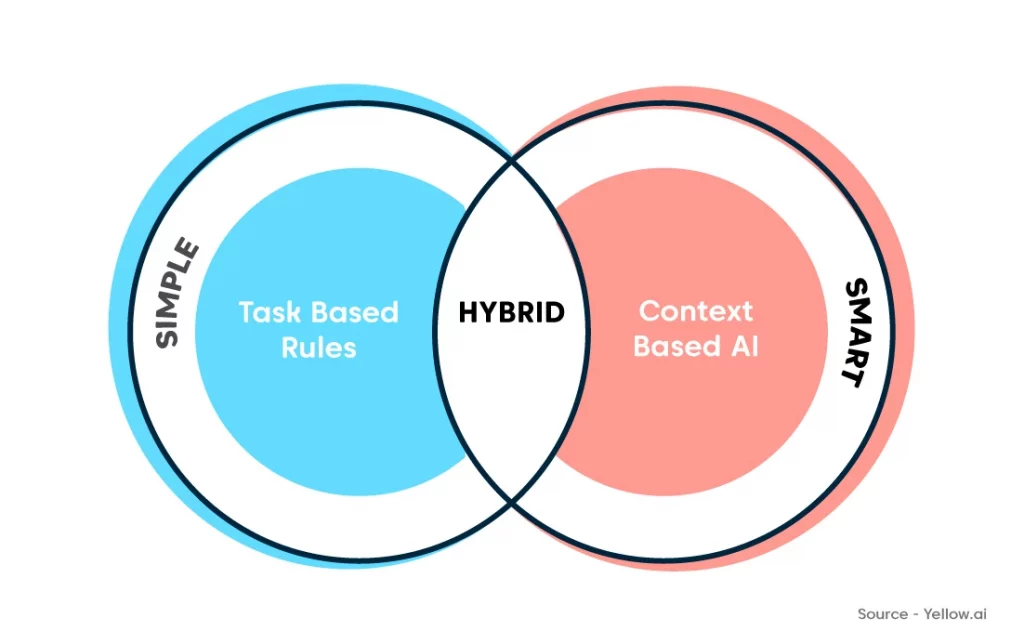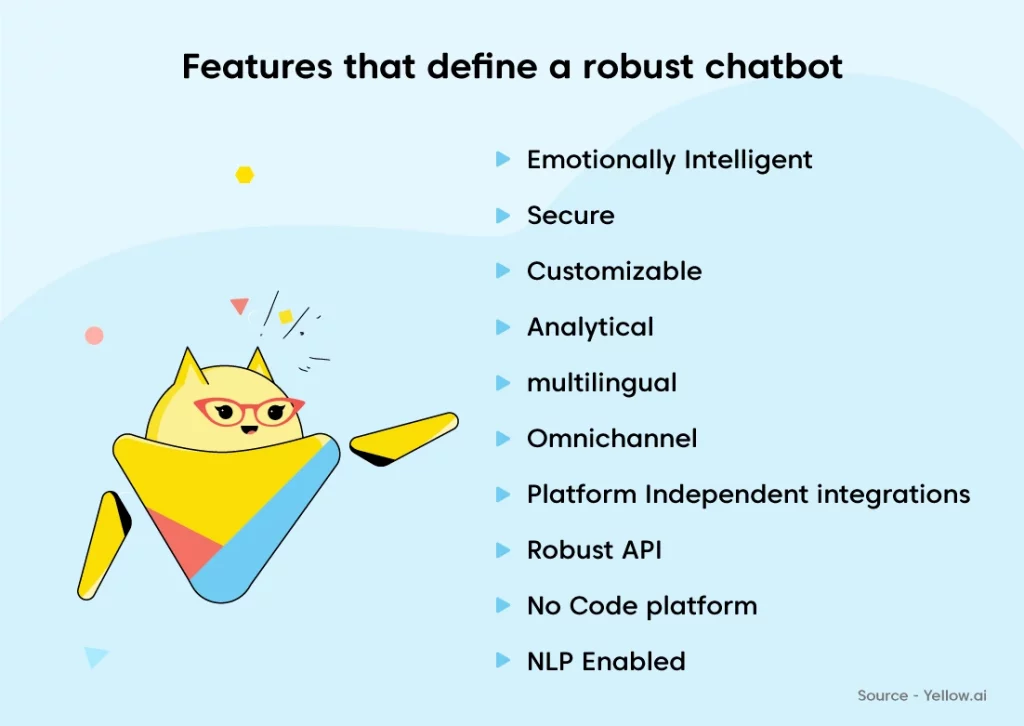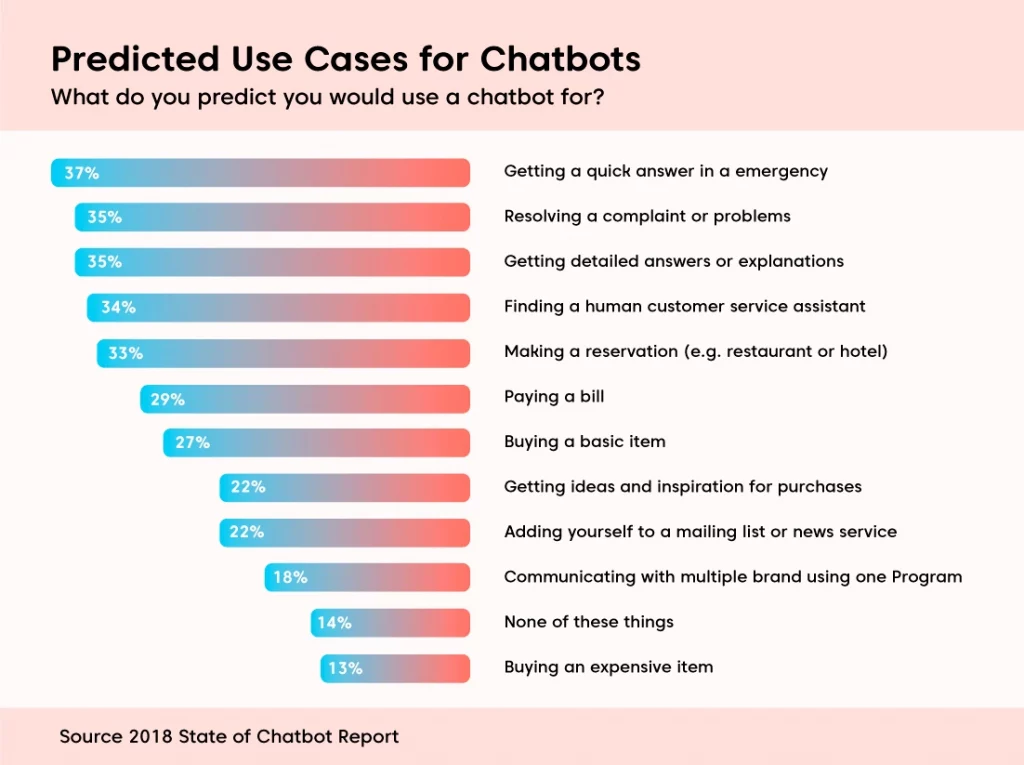Chatbots are computer programs that simulate human-like conversations with users through text or voice interactions. An increasing number of businesses today are deploying chatbots on multiple channels to meet their customer service requirements. But did you know that there is no one size fits all chatbot solution for every company?
To pick the right chatbot for your business, you need to know about the different types of chatbots with varying levels of capabilities and applications, and that is exactly what we are going to discuss in this blog today.

6 Types of chatbots – Their pros and cons
1. Rule-based chatbots
Rule-based chatbots, also known as flow-based or linguistic chatbots, are the type of bots that use a series of predefined rules to answer customers’ questions. To build such chatbots, you need to first predict the type of questions your customers can ask and then embed those queries into your chatbots.
So naturally, rule-based chatbots follow a rigid structure – if an incoming query is unable to match the rules defined by the chatbot, customers may not receive the most accurate answers and the chatbot will have to transfer the query to a human agent.
2. Keyword recognition-based chatbots
As the name suggests, these types of chatbots answer customer queries based on keyword recognition. In other words, keyword chatbots look for certain words or phrases in the customers’ questions and present them with an answer accordingly. Such chatbots are mostly used to answer repetitive or frequently asked questions (FAQs).
3. Menu-based chatbots
Menu-based chatbots, also called button-based chatbots are the most primitive chatbots on the list. They present customers with several options in the form of menus and buttons. Depending on what the customer chooses, the chatbot then answers the question.
These chatbots, like rule-based and keyword-based chatbots, follow a predetermined path or a decision tree that helps them find the exact answer to a question.
4. Contextual chatbots (Intelligent chatbots)
These chatbots are far more sophisticated than the ones we previously discussed and they even get smarter over time. They are built using powerful technologies such as natural language processing (NLP), natural language understanding (NLU), machine learning (ML) and AI.
These technologies enable them to understand customers’ intent and temperament to provide dynamic and fluid responses. Intelligent chatbots even remember past interactions to deliver a more personalized customer experience. Interacting with them is comparable to talking with a human agent.
5. Hybrid chatbots
These chatbots are the best of both worlds – simplicity of flow-based chatbots and sophistication of AI-powered chatbots. They act as a liaison between customers and businesses, as they initiate a conversation with the clients and then hand them off to a customer care representative.

6. Voice-enabled chatbots
These chatbots leverage NLP combined with speech-to-text(self-developed or already existing platforms) to hear, comprehend and respond to voice inputs. They follow the same technology as other voice assistants such as Alexa and Siri, where they hear your voice command, analyze the task and respond with a suitable answer.
Voice assistance can be both a complete voice-based model or a multimodal chatbot supporting both text and voice.
| Type of Chatbot | Pros | Cons |
| Rule-based chatbots | 1. Easy to build and train 2. Low implementation cost | 1. No self-learning feature 2. Lack of personalization |
| Keyword recognition chatbots | 1. Easy to implement 2. More consistent answers | 1. Low accuracy 2. Inability to solve complex queries |
| Menu/button chatbots | 1. Simple and easy to build 2. Provide quick answers to common questions | 1. Inflexible conversational flow. 2. Require constant intervention of a human agent. |
| Contextual chatbots | 1. Capable of answering more advanced questions 2. Self-learn and make conversations more personalized 3. Multiple internal and external enterprise applications | 1. Development can be expensive if done from scratch |
| Hybrid chatbots | 1. Seamless live-agent hand-off 2. Handle FAQs and repetitive queries | 1. Not as advanced as contextual chatbots. 2. Need constant supervision and maintenance. |
| Voice-enabled chatbots | 1. Enable a hands-free interaction 2. Customers can give voice inputs on-the-go | 1. Inability to understand multiple accents and languages. 2. Implementation is comparatively expensive |
How to choose the best chatbot for your business?
1. Evaluate the features of different chatbots
You need to be well-acquainted with the functionalities of different chatbots before you go ahead and choose one for your business. Each chatbot, as we discussed, serves a different purpose that can range from just answering FAQs to actually understanding human emotions and intentions to personalize conversations.
Once you know which features you want your chatbot to have, you can then decide what you want your chatbot to do.

2. Define the applications of your chatbot
When determining what chatbot is best for your company, you need to first define the problem that you want to solve. Do you wish to increase employee productivity? Do you want to improve query resolution time? Do you want to scale your CX efforts? By asking such questions, you’ll be able to identify the purpose of your chatbot.
For instance, if you only require a chatbot to answer FAQs, then a rule-based chatbot would do. But, if you want to handle open-ended customer queries, then you would either need an intelligent or a hybrid chatbot solution.
To get a head start, here are a few of the most popular applications of chatbots for enterprises.
a. Customer support- Answering customer queries, providing 24/7 support and personalized product recommendations.
b. ITSM automation- Reducing ticket pile-up by auto-classification of tickets, smooth live agent handoffs and auto-suggestions based on knowledge base.
c. Marketing and sales support- Generating, qualifying and scoring leads and creating up-selling and cross-selling opportunities.
d. Customer analytics- Recording customer data to derive insights about trends and behaviours to reduce resolution time and resolve tickets faster.
e. HR automation– Acting as a knowledge base for new employees, sourcing and onboarding new candidates, improving cross-functional team communication, etc.

3. Determine your budget and how much time you wish to spend
The money and time that you wish to spend on building a chatbot is the most important deciding factor. It will help you decide whether you wish to build a bot from scratch or you want to buy a pre-built solution.
When building a chatbot from scratch, you’ll have to hire a team of experienced developers. Whereas, by using a no-code chatbot builder, you can create a chatbot for yourself in a matter of minutes.
Wrapping up
Although there are multiple chatbots that serve different purposes, choosing one can definitely get overwhelming. It’s always a good idea to try different chatbots for your business before you commit to one and with the modern-day scenario of chatbot vendors, it’s definitely not impossible to try different chatbots at a very nominal cost or even for free.
If you are looking for a chatbot, that’s easy to implement and comes with pre-built functionalities, then your search ends here. Yellow.ai is one of the top chatbot providers in the world offering free trials and excellent speed to market value realization.
Request a demo and connect with our experts today to get started on your chatbot journey.


















